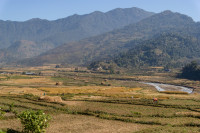Opinion
Inconvenient truth
Nepal is yet to submit a promise to reduce carbon emission as per the INDC pledge
Sagarika Bhatta
Nepal has not set a target to reduce carbon emission according to the intended nationally determined contribution (INDC) pledge. This will promote a low carbon economy and enhance carbon trading which will help to combat climate change, create pressure to reduce emissions, improve the economy, generate more employment opportunities and accelerate development. Manjeet Dhakal, technical advisor to the Ministry of Environment Science and Population, says that Nepal can go for a viable mitigation approach instead of limiting itself to adaptation because it is a negligible emitter of greenhouse gases.
The climate plan
The Least Developed Countries (LDCs) have been more determined to adhere to the climate plan. Adopting a low carbon and climate resilient pathway is easier and part of the development process for them. These pledges also put pressure on the developed countries to enforce a plan that pushes towards a low carbon economy. Nepal has been lagging behind the rest of the LDCs with regard to its plan of action. This may be because it was not obliged to submit its INDC at COP 21, which is also known as the 2015 Paris Climate Conference.
Among LDCs, Bhutan seems to be very ambitious. Its forests absorb three times more carbon than is emitted by its population. It has pledged to expand its forest cover to 60 percent. Besides pursuing agro forestry, Bhutan is planning to combat the regional growth of car culture by promoting greater use of public transportation and electric vehicles. It aims to offset 6 million tonnes of carbon dioxide in the neighbourhood by 2020 and generate electricity from renewable fuel sources to offset 17 million tonnes of carbon dioxide in the neighbouring countries, according to Bhutanese Prime Minister Tshering Tobgay. Similarly, India has pledged to produce 40 percent of its energy requirement by using non-fossil fuel sources. If Bhutan can gain international attention and trust, why cannot Nepal? It was an opportunity for Nepal but it missed setting INDC targets and plans.
The most important step after the Paris agreement is yet to come. Countries are scheduled to ratify the agreement on April 22, which is being celebrated as Earth Day. The top 10 emitters of greenhouse gases emit around 68.2 percent of the world’s total. Even if the rest of the world including the LDCs sign the agreement, it will not be enough to fulfil the COP 21 goal. The US, Canada and China seem to be positive about adopting a low carbon economy. The agreement comes into full effect when 55 percent of the emitters of greenhouse gases sign it. When this condition is fulfilled, the pact becomes a legally binding document within one month. After that, countries have to finalise their nationally determined contribution (NDC) and submit a progress report every five years.
Way forward
Nepal can grab this opportunity and set an ambitious NDC target. Mitigation is a catalyst for development and employment opportunities in Nepal. A clean development mechanism not only helps to reduce emission, but also improves the country’s economy. Clean technology promotes development and employment, encourages investment and allows a country to switch to a low carbon economy. “It was challenging to make the INDC in a short period of time. We did not have any research-based data to help us set a target. But thinking about this provides the basis for our research and an opportunity for organisations and agencies to help the government in making an analysis,” Dhakal said.
Nepal’s electricity sector is basically carbon neutral as it relies almost entirely on hydropower generation and the rest is bought from India. With a proper plan, the country can be more ambitious, trade energy and conduct carbon trade with neighbouring countries and reduce emission. Most of the emission in Nepal comes from the transportation sector and, to a lesser extent, from industry. Finding alternatives to fossil fuel can not only reduce emission but also make Nepal less dependent on India for energy.
A good team, proper plans and strategies and transparent financing is necessary to set an example to the world what Nepal can do with adequate funding and support from the international community. Nepal has pledged to maintain 40 percent of the total land area under forest cover. This does not mean much as 39.6 percent of the land is already covered by forests. Setting an ambitious plan could be a chance to gain international trust, support and finance for implementation.
Bhatta is Program Manager of Powershift Nepal, a climate change campaign launched under 350.org




 15.12°C Kathmandu
15.12°C Kathmandu










